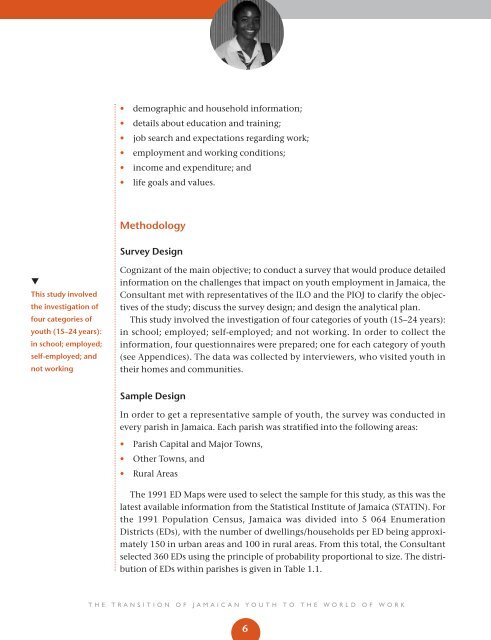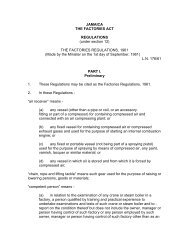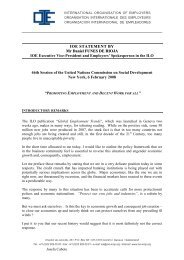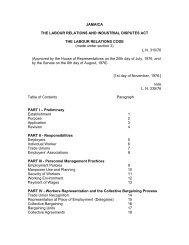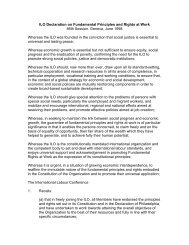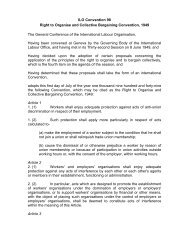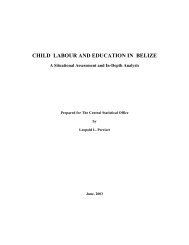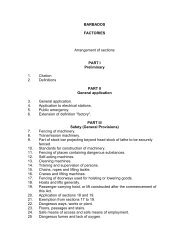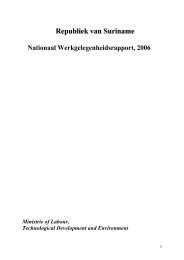The Transition of Jamaican - International Labour Organisation ...
The Transition of Jamaican - International Labour Organisation ...
The Transition of Jamaican - International Labour Organisation ...
You also want an ePaper? Increase the reach of your titles
YUMPU automatically turns print PDFs into web optimized ePapers that Google loves.
• demographic and household information;<br />
• details about education and training;<br />
• job search and expectations regarding work;<br />
• employment and working conditions;<br />
• income and expenditure; and<br />
• life goals and values.<br />
Methodology<br />
Survey Design<br />
<br />
This study involved<br />
the investigation <strong>of</strong><br />
four categories <strong>of</strong><br />
youth (15–24 years):<br />
in school; employed;<br />
self-employed; and<br />
not working<br />
Cognizant <strong>of</strong> the main objective; to conduct a survey that would produce detailed<br />
information on the challenges that impact on youth employment in Jamaica, the<br />
Consultant met with representatives <strong>of</strong> the ILO and the PIOJ to clarify the objectives<br />
<strong>of</strong> the study; discuss the survey design; and design the analytical plan.<br />
This study involved the investigation <strong>of</strong> four categories <strong>of</strong> youth (15–24 years):<br />
in school; employed; self-employed; and not working. In order to collect the<br />
information, four questionnaires were prepared; one for each category <strong>of</strong> youth<br />
(see Appendices). <strong>The</strong> data was collected by interviewers, who visited youth in<br />
their homes and communities.<br />
Sample Design<br />
In order to get a representative sample <strong>of</strong> youth, the survey was conducted in<br />
every parish in Jamaica. Each parish was stratified into the following areas:<br />
• Parish Capital and Major Towns,<br />
• Other Towns, and<br />
• Rural Areas<br />
<strong>The</strong> 1991 ED Maps were used to select the sample for this study, as this was the<br />
latest available information from the Statistical Institute <strong>of</strong> Jamaica (STATIN). For<br />
the 1991 Population Census, Jamaica was divided into 5 064 Enumeration<br />
Districts (EDs), with the number <strong>of</strong> dwellings/households per ED being approximately<br />
150 in urban areas and 100 in rural areas. From this total, the Consultant<br />
selected 360 EDs using the principle <strong>of</strong> probability proportional to size. <strong>The</strong> distribution<br />
<strong>of</strong> EDs within parishes is given in Table 1.1.<br />
THE TRANSITION OF JAMAICAN YOUTH TO THE WORLD OF WORK<br />
6


